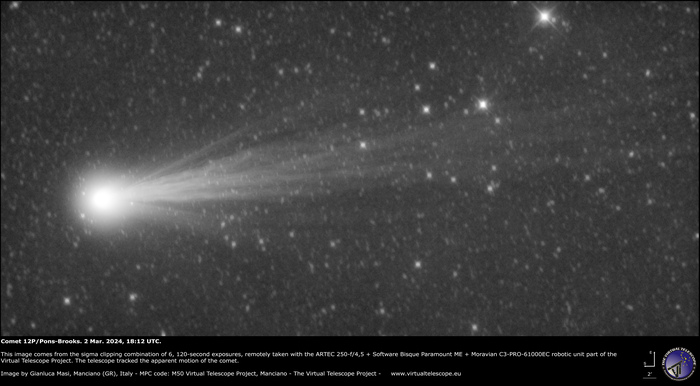A 'photobomber' comet could make its appearance in the images that will be taken during the next solar eclipse on April 8, visible from the Americas: it is called 12P/Pons-Brooks, it follows an elliptical orbit around the Sun that lasts about 71 years and is now approaching its perihelion, the closest point to our star, which it will reach on April 21.
The comet is subject to sudden increases in brightness and if one of these were to occur shortly before the eclipse, which will be observable only from Central and North America, it could become visible in the photos of astronomers and amateur astronomers who will follow the event, and perhaps even to the naked eye.
Meanwhile, the comet has already been immortalized by the Virtual Telescope Project, thanks to the instruments located in Manciano (Grosseto), where the darkest sky in continental Italy can be found.
12P/Pons-Brooks is a cryovolcanic comet: this means that, from time to time, it erupts a combination of ice and gas called 'cryomagma' when solar radiation manages to break its icy shell.
When this happens, the comet's coma expands, making it appear much brighter for several days.
This is what happened, for example, last July 19, 2023, when the news of a new eruption by the comet was followed by many enthusiasts around the world, as recalled by the Italian Amateur Astronomers Union.
Subsequently there were other episodes and this raises the hope that a similar event could occur again in conjunction with the solar eclipse: for astrophotographers it would be a more unique than rare event.
Also because, at night, 12P/Pons-Brooks is very low on the horizon, as explained by the Uai, and therefore appears less bright due to the phenomenon of atmospheric extinction, i.e. the absorption and dispersion of electromagnetic radiation by of the earth's atmosphere.
Reproduction reserved © Copyright ANSA

